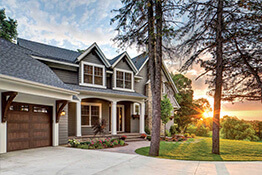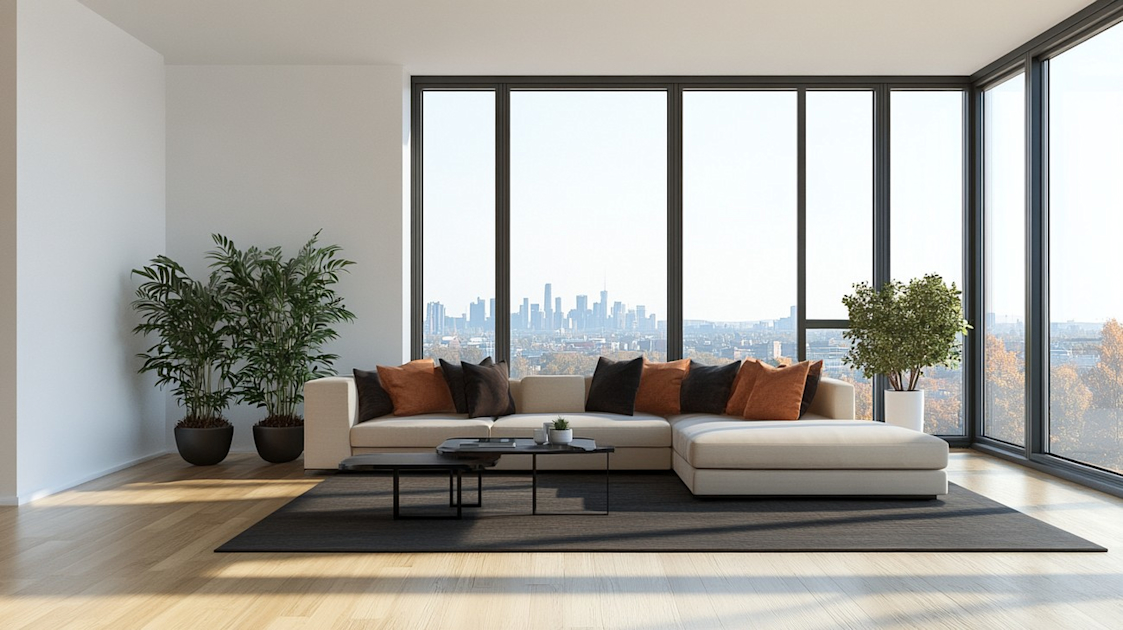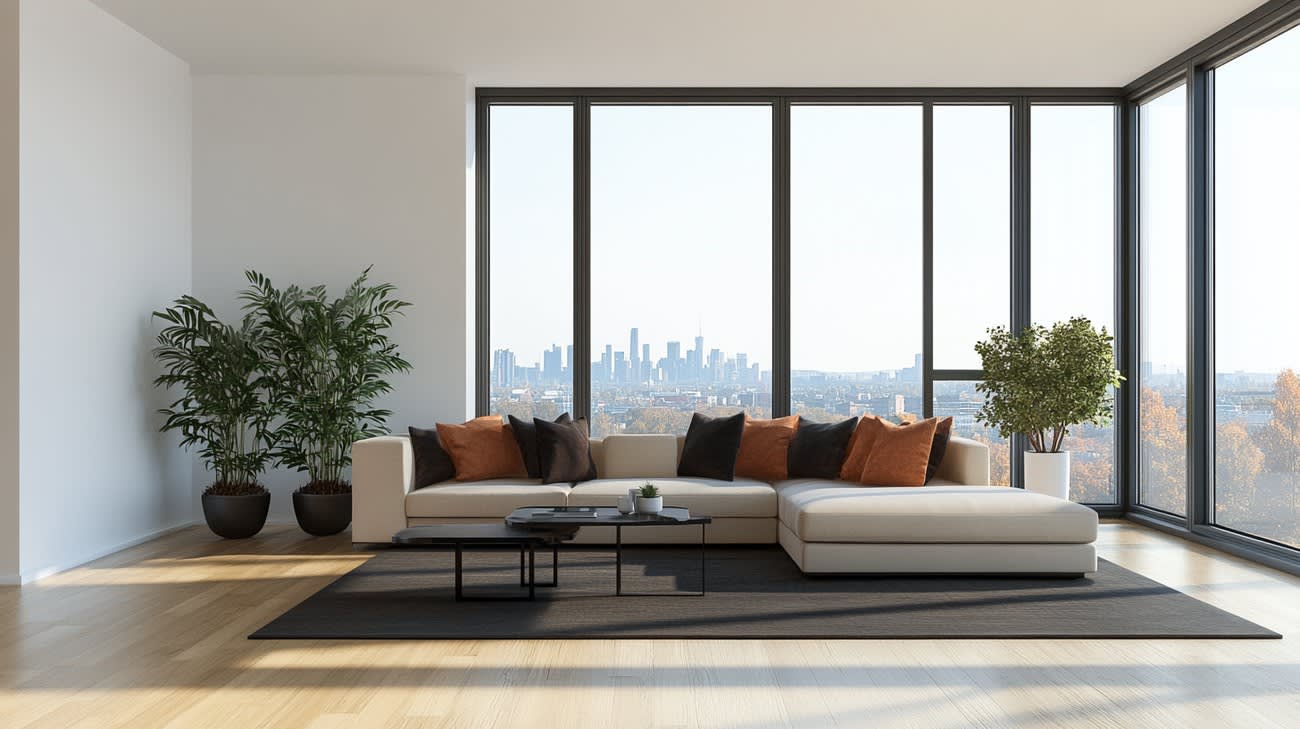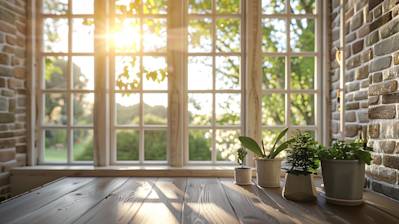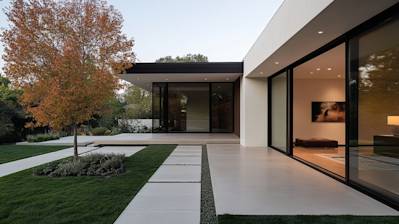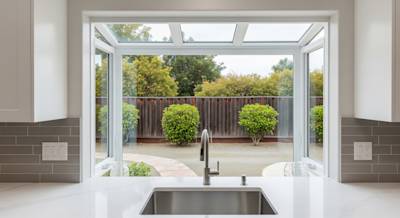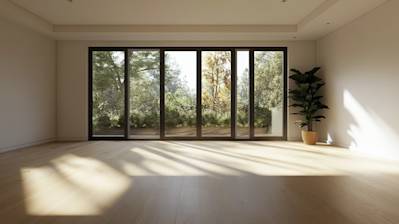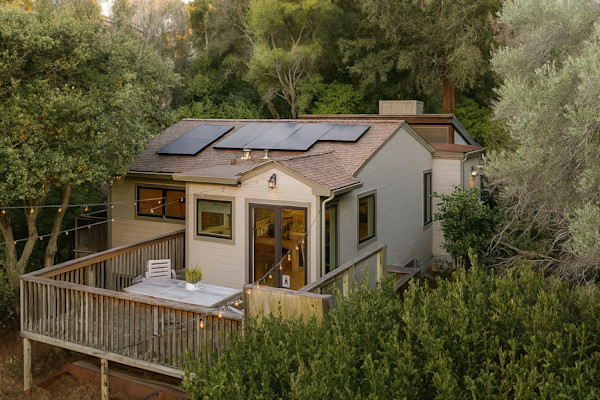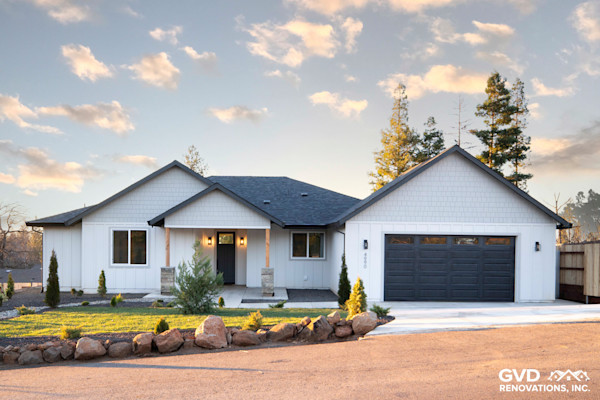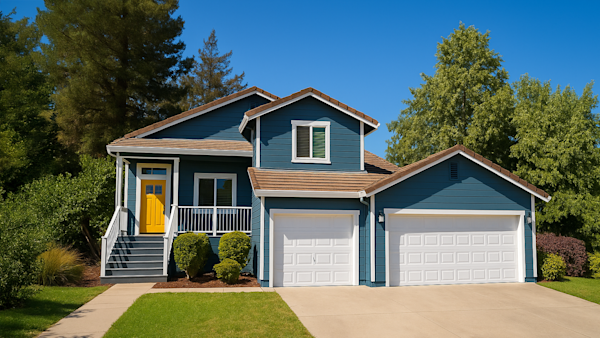Floor to ceiling windows are a modern architectural design that has quickly revolutionized building aesthetics and functionality. These towering glass features have become quite a trend as they not only add value to your property, but also create a seamless indoor-outdoor connection. If you're considering incorporating floor to ceiling windows in your home makeover, here are several invaluable insights to help you understand this stunning trend.
Introduction to Floor to Ceiling Windows
Floor to ceiling windows—also referred to as curtain windows—are large unobstructed windows that run from the floor to the ceiling. These windows are often made of multiple glass panes and offer exceptional panoramic views. If you're planning a grand renovation, floor-to-ceiling windows could be a perfect focal point for your indoor décor and extend your living space's visual boundary.
Structural Beauty of Floor to Ceiling Windows
Aesthetic Appeal
Floor to ceiling windows offer a minimalist, clean look that maintains their elegance over time. The glass panes provide a modern style and add delicate, luxurious vibes to any home. Leaving the windows bare or utilizing simple window treatments like curtain sheers or roller blinds can complement your home's contemporary design.
Spacious Feel
Due to their vertical span, floor-to-ceiling windows generate an incredible sense of openness and spaciousness. They let in floods of light, creating a bright and airy atmosphere that generates an illusion of larger spaces.
Energy Efficiency and Environment Friendliness
Floor-to-ceiling windows are not solely popular for their beauty. They are also prized for their energy efficiency and environmental friendliness:
- Natural Light: Floor-to-ceiling windows provide ample natural light, reducing the need for artificial lighting during the day, which subsequently reduces your energy usage.
- Solar Heat Gain: These windows can be utilized strategically to leverage solar heat gain during colder months, decreasing reliance on heating systems.
- Air Circulation: With operable floor-to-ceiling windows, you can increase air circulation in your home, promoting energy efficiency and enhancing indoor air quality.
Functional Advantages of Floor to Ceiling Windows
Panoramic Views
Floor-to-ceiling windows provide unmatched, unobstructed views of the surrounding landscapes. Whether overlooking a cityscape or a serene garden, these windows connect you with the outdoors and offer a daily dose of tranquillity.
Indoor Plant Health
Enhanced natural light can boost the health and growth of indoor plants, allowing for a nature-infused space. It’s an ideal setting for plant parents who want their greenery to thrive.
Value Addition
Floor to ceiling windows are a surefire way to increase your property value due to their contemporary appeal and energy efficiency benefits.
Material Options for Floor to Ceiling Windows
There are various materials that can be used to frame floor to ceiling windows:
- Aluminium: Lightweight, durable and virtually maintenance-free.
- Wood: Offers a warm, traditional aesthetic but requires regular maintenance.
- Vinyl: Cost-effective, insulating and low maintenance.
- Fibreglass: Energy-efficient, sturdy, and can mimic the look of wood.
Floor to Ceiling Windows Installation
When pondering the installation of floor-to-ceiling windows, partnering with seasoned professionals is crucial. Installation involves detailed measurements, high-quality materials, and expert craftsmanship to ensure safety, durability, proper insulation, and breathtaking results.
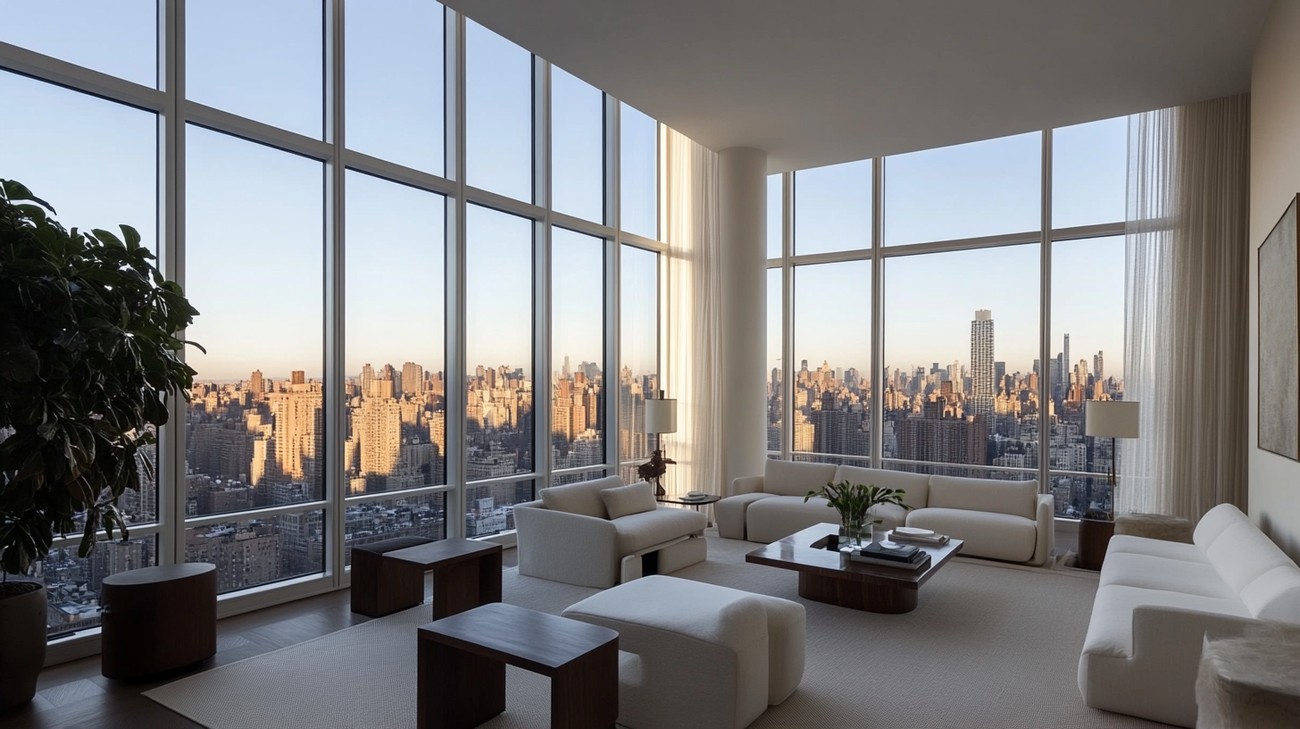
Frequently Asked Questions about Floor To Ceiling Windows
How Do Floor to Ceiling Windows Enhance Interior Design?
Floor to ceiling windows effectively blur the line between the indoors and outdoors, creating a sense of openness and spaciousness. They can make any room appear larger and brighter by flooding it with natural light. Moreover, they offer unobstructed views of the outside, allowing homeowners to bring a slice of nature into their living spaces.
What Materials are Commonly Used in Floor to Ceiling Windows?
Most floor to ceiling windows are made from tempered glass for safety reasons, but other materials used can include insulated glass for energy efficiency, or laminated glass for added strength and noise reduction. The frames can be made of various materials such as aluminium, vinyl, wood, or composite, depending on individual aesthetic preferences and budget.
Are Floor to Ceiling Windows Energy Efficient?
The energy efficiency of floor to ceiling windows largely depends on their construction and installation. High-quality windows designed with features such as double or triple glazing, low-E coatings and argon or krypton gas fills can be very energy efficient. They help to maintain indoor temperatures and reduce the costs of heating or cooling your home.
Can I Install Floor to Ceiling Windows in a Traditional-style Home?
Yes, you can install floor to ceiling windows in a traditional-style home. Despite being a common feature in modern and contemporary designs, these windows can also complement traditional homes, providing a perfect blend of classic design with a modern twist.
Are Floor to Ceiling Windows Safe?
Safety is indeed a valid concern when considering floor to ceiling windows. However, these windows are typically made using tempered or laminated glass, which is much stronger and safer than regular glass. Additionally, regulations require that floor to ceiling windows be installed with safety measures such as protective barriers to prevent accidents, especially in households with children or pets.
How are Floor to CeilingWindows Installed?
Installing floor to ceiling windows should be done by a professional to ensure that they're properly fitted, sealed, and insulated. In the case of retrofitting existing homes, structural changes might be needed to accommodate these large windows, which will require careful planning and professional expertise.
How Do You Maintain Floor to Ceiling Windows?
Maintaining floor to ceiling windows involves regular cleaning to keep them looking their best. Considering their size, you may need to hire professional window cleaners for the job, especially for windows that are hard to reach. It’s also good to regularly check the seals and frames for any signs of damage.
Can Floor to Ceiling Windows be Opened?
Yes, depending on the design chosen, floor to ceiling windows can be opened for ventilation. Some designs are fixed and cannot be opened, while others feature sliding, tilting, or folding mechanisms that allow them to be opened. However, due to their size, opening these windows can sometimes be challenging and may involve special mechanisms.

Pros of Floor to Ceiling Windows
Enhanced Natural Light
With floor to ceiling windows, you gain the advantage of an abundance of natural light, illuminating your living space brilliantly. It eradicates the need for relying solely on artificial lighting throughout the day. This not only enhances the ambiance of your room but also helps in saving electricity costs.
Amplified Views
If you reside in a scenic area, floor to ceiling windows can exponentially improve the overall aesthetic of your room. With such windows, you get wider, unobstructed views of the outside world. They can convert a dull living space into a dynamic slice of nature's splendor.
Spacious Illusion
Floor to ceiling windows offer an optical illusion, making your room appear larger than it actually is. Prospective buyers or renters could find this expanded sense of space quite appealing, which can additionally enhance your property’s value.
Variety of Designs
There's a variety of designs that can be chosen when installing floor to ceiling windows. They can be adapted to blend with any architectural style. Designers often use these windows to create a statement piece within the living space.
Energy Efficiency
Modern floor to ceiling windows usually come double-glazed which significantly improves insulation. This can result in lower heating and cooling costs, making them a sustainable choice in long term.
Cons of Floor to Ceiling Windows
Privacy Concerns
While aesthetic and functional, these high, wide windows do present significant privacy concerns, especially in populated areas. Using curtains or blinds can resolve this issue to an extent, but it negates the purpose of having such grand windows—unobstructed views and natural light.
Higher Costs
The installation, maintenance, and possible need for custom window treatments carry higher costs compared to traditional windows. The high initial cost can be a deterrent for some homeowners.
Increased Risk of Breakage
Floor to ceiling windows, especially if they are made of glass, come with the risk of damage or breakage. Given their massive size, replacing them can be pricey. Therefore, it is recommended to use tempered or laminated glass for safety, which may add to the cost.
Exposure to Extreme Weather
In areas prone to harsh weather conditions like storms or hurricanes, these windows could prove to be a liability. It's essential to opt for storm-proof glass to avoid this issue.
Greater Energy Consumption at Times
While insulation properties of the modern floor to ceiling windows can lead to energy saving, they might also lead to a heat trap inside the house during summers. It may force you to use air conditioning more often, resulting in higher energy consumption.
Sun Glare and UV Exposure
Unfiltered sunlight can result in uncomfortable sun glare or excessive heating of rooms. UV rays can also cause fading of furniture, carpets and artwork over time. UV protective options are available but at a higher cost.
Limitations on Wall Space
Floor to ceiling windows take up significant wall space, limiting areas where you can place furniture or hang artworks. It needs careful space planning to avoid impediments near the window area.

Myths and Misconceptions about Floor-to-Ceiling Windows
Myth 1: Floor-to-Ceiling Windows are Only for Modern Designs
One prevalent misconception is that floor-to-ceiling windows are exclusively for contemporary or modern designs. While these types of windows can undoubtedly complement a sleek, minimalist aesthetics, they're also incredibly versatile and can fit nicely with a wide array of architectural styles. Floor-to-ceiling windows can add dramatic charm to more traditional homes, or create a striking contrast in rustic or industrial designs.
Myth 1.1: They Create a Cold Atmosphere
For those who associate floor-to-ceiling windows with modern, minimalist styles, there may be a stereotype that these windows create a cold or sterile atmosphere. In reality, they can contribute significantly to a cosy, welcoming environment. This is because they allow abundant natural light which can make spaces feel more expansive, open and inviting.
Myth 2: Floor-to-Ceiling Windows Compromise Privacy
Another common misconception is that these large windows compromise privacy. While it's true that these windows can give a clear view into your home, there are a multitude of solutions to protect your privacy without sacrificing aesthetics or natural light.
Myth 2.1: You Cannot Use Window Treatments
Some people believe that you cannot use window treatments with floor-to-ceiling windows. This is certainly not the case. There are a variety of options available including roller blinds, curtains, and privacy glass, all of which allow you to control visibility as per your convenience.
Myth 3: They are Not Energy Efficient
A common myth regarding floor-to-ceiling windows is that they're not energy-efficient, allowing heat to escape in the winter and hot air to enter in the summer. However, with advances in technology, this is no longer the case. Many are specifically designed to be energy-efficient, using features like double-glazing and low-emissivity coatings to help regulate indoor temperatures and save on energy bills.
Myth 3.1: They Require More Indoor Heating and Cooling
Connected to the above misconception, many assume that floor-to-ceiling windows lead to increased usage of heating and cooling systems. However, with the right type of glazing, these windows can work to improve your home's insulation, reducing the need for mechanical heating and cooling system usage.
Myth 4: Floor-to-Ceiling Windows are Not Safe
Concerns about safety are one reason many people might hesitate to consider floor-to-ceiling windows. There's a belief that these windows are more prone to break-ins or could shatter easily. On the contrary, many of these windows are made with reinforced glass that is more resilient against breakage. There are also specific locking systems and security measures that can be installed for extra peace of mind.
Myth 4.1: They are Not Kid-friendly
A related misconception is that floor-to-ceiling windows aren’t kid-friendly. In reality, safety laminated glasses not only provide safety against accidental breakage but also come with a protective layer that holds broken pieces together, reducing the risk of injury.
Myth 5: They are Difficult to Clean
It's often assumed that floor-to-ceiling windows are challenging to keep clean, given their size and the fact that they stretch from floor to ceiling, which might be difficult to reach. While it may require a bit more effort compared to smaller windows, this doesn’t necessarily mean they are hard to clean. There are plenty of tools available on the market, such as extendable squeegees or professional cleaning companies, that can make the job much easier.
Enduring myths and misconceptions about floor-to-ceiling windows can make people hesitant to consider them for their homes. But as we have debunked above, many of these myths are not grounded in present-day reality and should not prevent you from incorporating these beautiful architectural features into your home.
Summary
So, whether you're redecorating your place or planning a new build, floor to ceiling windows can certainly make a massive difference. They add an element of sophistication and luxury, giving you panoramic views of your surroundings. They can allow more sunlight into the room, providing you with the benefits of natural light and thereby enhancing your mood and productivity.
Are you a nature lover or an artist, who finds inspiration from the outside world? If yes, then floor to ceiling windows are perfect for you. Imagine soaking in a warm tub with a glass of wine, watching the snowflakes gently falling or the sun setting into the horizon. It not only brings nature close to you but also creates an ideal scenario for you to relax, rejuvenate, and stimulate your creative mind.
The floor to ceiling windows are incredibly stylish, but they are also practical. With the right materials and design, these windows can improve the energy efficiency of your home. They are also extremely versatile and can easily fit into almost any architectural style - whether it's a chic modern apartment, a rustic farmhouse, or the sophisticated mid-century modern style. With such windows, your home will surely make a sweeping statement.
About GVD Renovations & Remodeling
GVD Renovations & Remodeling is a dynamic, full-service home remodeling company hailing from sunny Roseville, CA. We're deeply passionate about turning houses into homes, specializing in everything from kitchen and bathroom remodels to siding installs and window replacements. With a commitment to top-notch craftsmanship, communication, and customer satisfaction, our local team serves homeowners throughout Northern California with the goal of making their renovation dreams a reality. If your home is in need of a makeover, trust GVD Renovations & Remodeling to make it happen!
This article is for general information only and not professional advice. Always consult a licensed contractor before making project decisions. Product details, specifications, or warranties may have changed since publication. Brand and product mentions reflect opinion, not endorsements or guarantees.
Tags: large windows, natural light, modern design,
